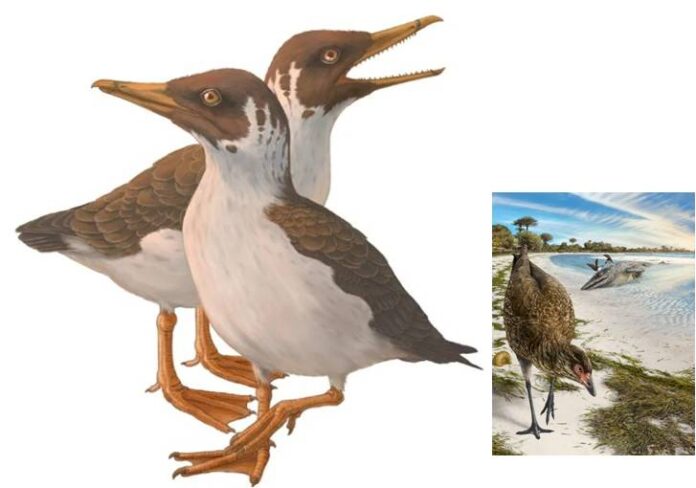Why did the dinosaurs vanish after the Cretaceous-Tertiary event some 65 million years ago? As I was reading an article describing a large toothed-bird name Janavis that is altering paleontologists’ perspectives on avian evolution, the authors of the University of Cambridge paper noted that like the dinosaurs, this species succumbed to the mass extinction event. The article suggests that the size of Janavis, as big as a large vulture, may have been the determining factor in its demise just like the dinosaurs.
The paper published in Nature in November of last year mentions a bird species called the “wonderchicken” that lived a million years before the Cretaceous-Tertiary event and managed to survive the cataclysm that killed off the many branches of dinosaurs including the avians.
Wonderchicken’s official name is Asteriornis maastrichtensis. The size of a modern-day quail, could its small size have determined why it survived while the hegemons of the period, the dinosaurs didn’t?
Quails are small birds weighing between 70 and 140 grams (2.4 to 4.9 ounces) and standing 11 to 20 centimetres (4.5 to 7.8 inches) in height. They are omnivores capable of surviving on seeds, small insects and invertebrate food sources. If Wonderchicken, with its combination of chicken and duck-like features, had similar eating habits, it might have made it through the Cretaceous-Tertiary event because it was highly adaptive to diminished food resources.
The paper I read was all about the latest findings on Janavis through the use of CT scans to analyze its fossil remains. Janavis’ beak featured teeth. It likely preyed on fish and other sea life and maybe even things that washed up on beaches like that depicted in the inset picture to the right of Wonderchicken.
It was the authors’ speculations on why Janavis didn’t survive and Wonderchicken did that inspired me to write today’s blog post. Did Janavis’ size work against it after food chains collapsed following the asteroid impact? Was Janavis exclusively carnivorous and therefore its diet was limited to mostly living prey? Could it have been a carrion eater like vultures?
Was it being small that allowed animal species to survive because small meant less food needed in a world where there was a paucity of food in the post-apocalyptic period after the Cretaceous-Tertiary event?
If we look at the largest animals on the planet today, whales can be found in the ocean and elephants on land. Neither whales nor elephants existed 65 million years ago. Whales date their ancestry back to 50 million years ago. Elephants to approximately 35 million years in the past. If either species in their modern form had been around when the asteroid struck, would they have gone extinct based on the hypothesis proposed by the authors of the paper studying Janavis?
Other theories abound to explain why mammals and other terrestrial species survived and not dinosaurs. Some scientists speculate that the burrowing capacity of mammals allowed them to escape the intense heat that followed after the asteroid impact. When conditions cooled off, mammals re-emerged. If small, the disrupted food chain still left them with enough to eat. But what about small mammals that also perished with the dinosaurs, vanished species like triconodontids, spalacotheroids, dryolestids and multituberculates? Were any of these much bigger than the mammals that did survive, or for that matter, Janavis? No. Most of them turned out to be just as small as the survivors.
Could another factor for survival be that species whose diet was generalized more readily thrive when there are diminished food sources? Should we, therefore, consider our mammalian existence owing a debt to a creature 66 million years ago, the size of a tree shrew, that could forage on what was left after the asteroid struck?
Eating less sounds plausible as a reason for some species to survive while others died 65 million years ago. But survival cannot be explained by diminished size alone. That is what makes the mass extinction event at the Cretaceous-Tertiary boundary such a mystery.
Random chance, being in the right place versus the wrong place on the day of, may have more to do with who did and didn’t survive. But Wonderchicken came through. And when you sit down at family holiday dinners, you can thank that little bird as you dig into your turducken. That’s because turkeys, chickens and ducks owe their existence to a bird called the Wonderchicken.









